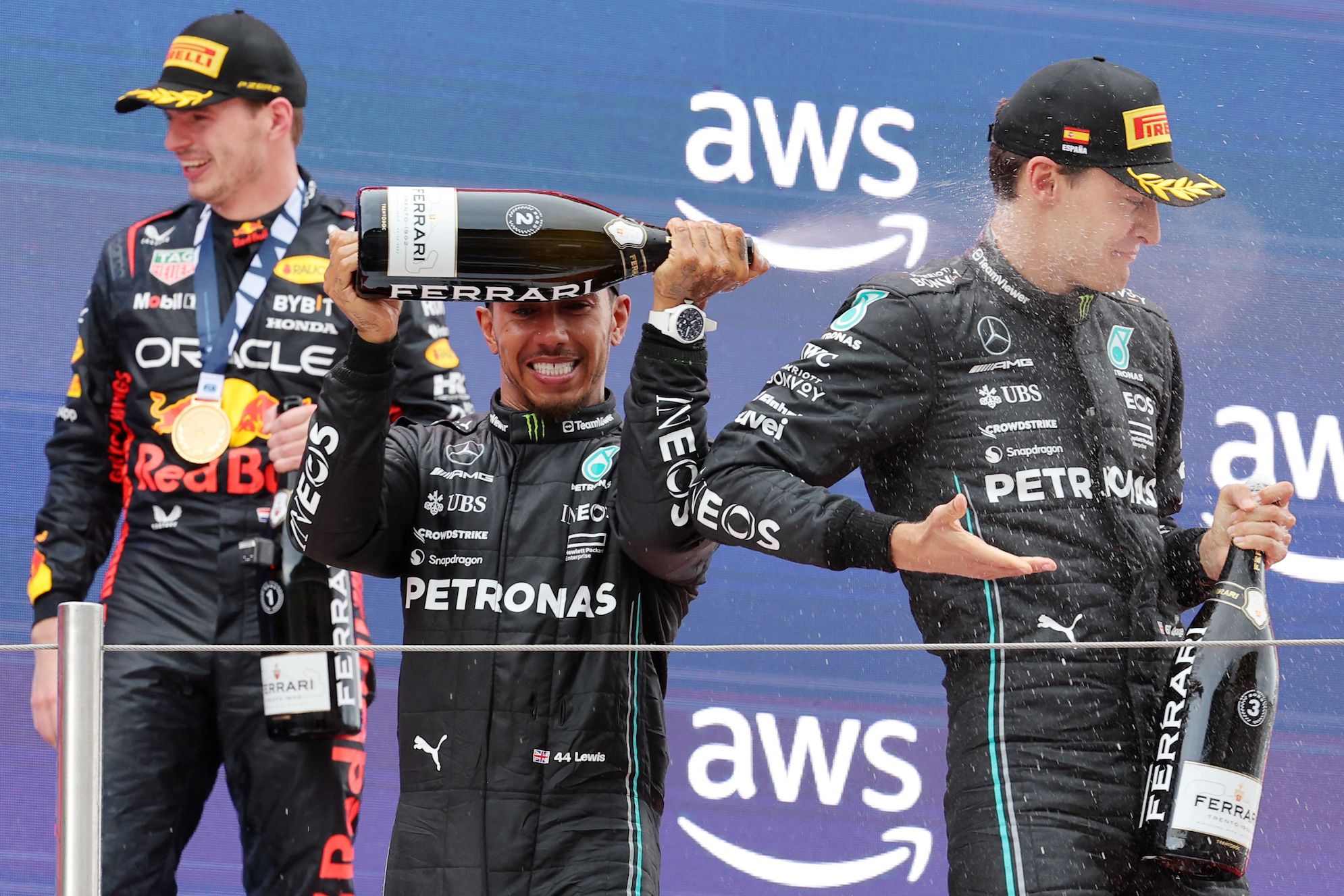“Ferrari is a brand that needs to be explained; some people think it’s the car or an expensive Prosecco – that’s why we think restaurants, hotels and high-end bars are so important to us,” says Matteo Lunelli.
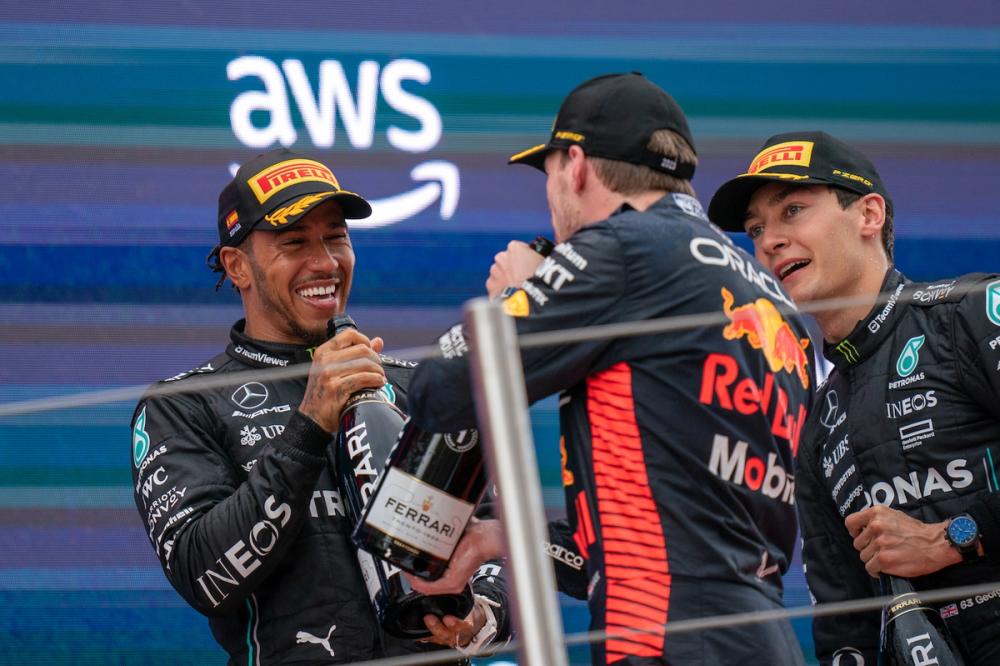
Top three drivers during the F1 Grand Prix of Spain, June 04, 2023: the F1 tie-up has been a masterstroke of marketing.
Champagne may have written the book on category maximisation by making their product inseparable from success, sex and celebration, but today, their playing field has more than one player. An obsession with quality combined with the maverick marketing genius of Ferrari Trento have propelled this once-modest upstart into the sparkling wine stratosphere.
The story of Ferrari’s success begins in Northern Italy when, in 1902, Guilio Ferrari created a Champagne Methodo Classico wine in Trento with absolute integrity and a genuine passion.
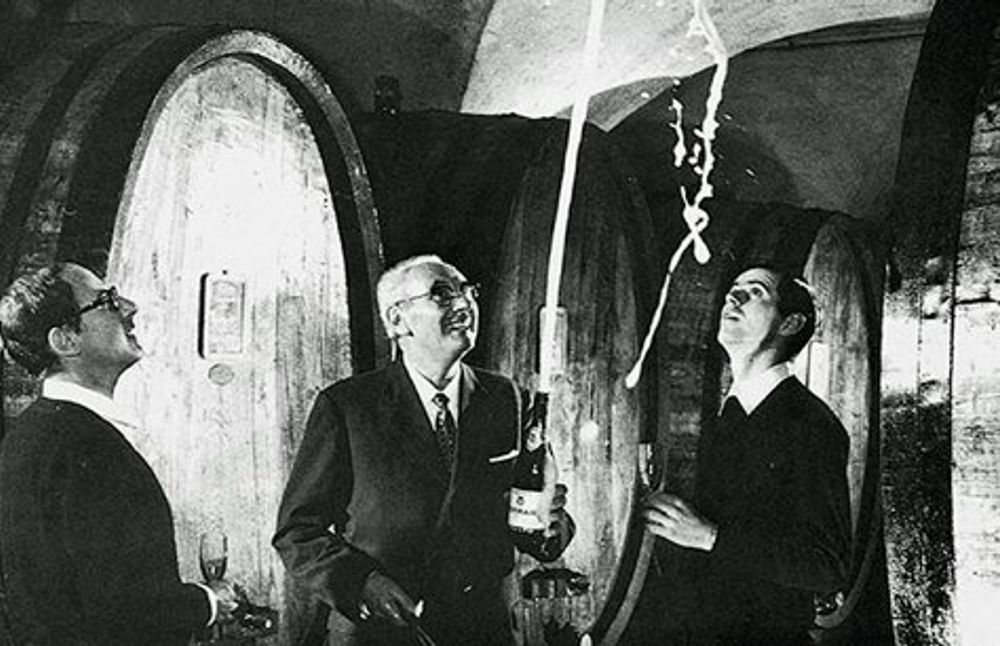
“I told you not to shake the bottle”: Birth of a legend… Guilio Ferrari
But bubbles require magic, and that’s what Gino Lunelli supplied. Childless Guilio Ferrari chose to sell to the Lunelli family in 1952. He was friends with Bruno Lunelli, a Trento-based wine merchant blessed with a large family. Lunelli saw a great opportunity and acquired massive debt to buy the firm.
The showmanship of Bruno’s son Gino was crucial in building the brand. A man of charisma, with the prescience of a paparazzi, he dared to smuggle Ferrari into the medicinal ice boxes of Juventus on cup final day, betting on victory and the photographs that came with it.
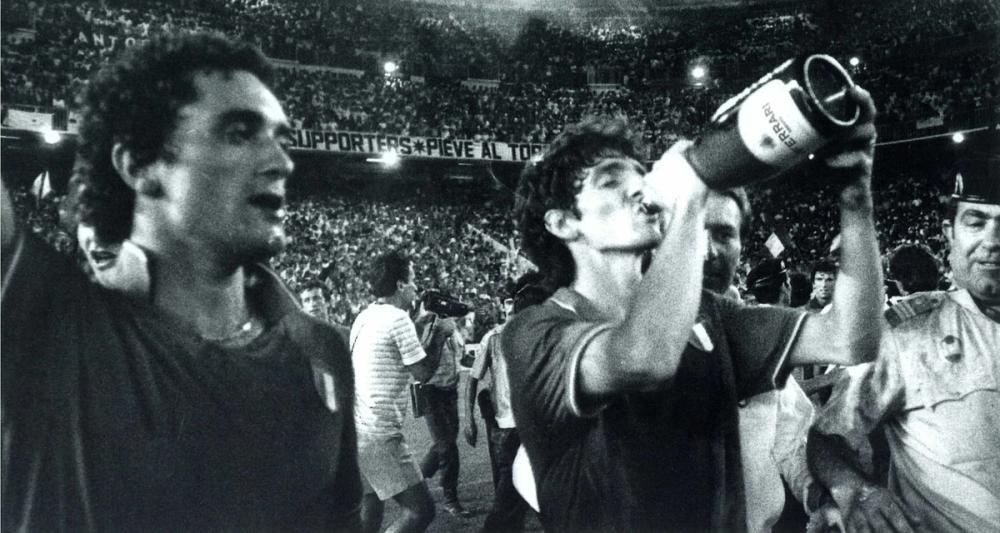
Product placement at its finest: Claudio Gentile and Paolo Rossi at the World Cup 1982
Time and time again, he had Ferrari pictured with perfect people in beautiful places. He was the original guerrilla marketeer; he used his wit and charm to be in the right place at the right time, camera and bottle forever in hand. The celebrity razzle stuck.
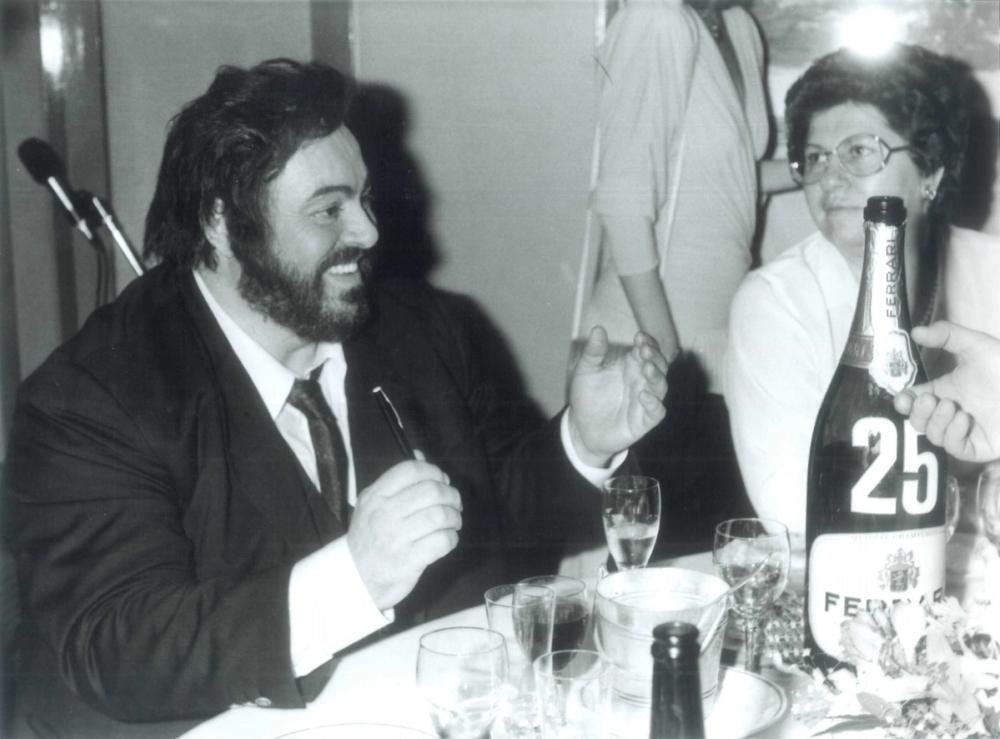
Even getting Luciano Pavarotti into the act
Today, Ferrari is playing with the big boys; the recent appointment of Cyril Brun as head of the winemaking team sends a clear message to Champagne and the world about where they see their wines on the global stage. I asked Brun what he would bring to Ferrari and if Lunelli are hoping to make Ferrari more like Champagne?
“I don’t think so. When speaking with Matteo and the family members their ambition is to create a unique identity and a strong profile and style that will be Trentodoc. They don’t want to be the monkey of Champagne.”
“I have known the estate for many years so I knew where I was going but it’s different when you see the outside from the inside and you discover there is even more potential than you were expecting. You see the details and winemaking is all about details, you discover that by tweaking a few things that have never even been tweaked before, you can effect a big difference. The big boss is nature.”
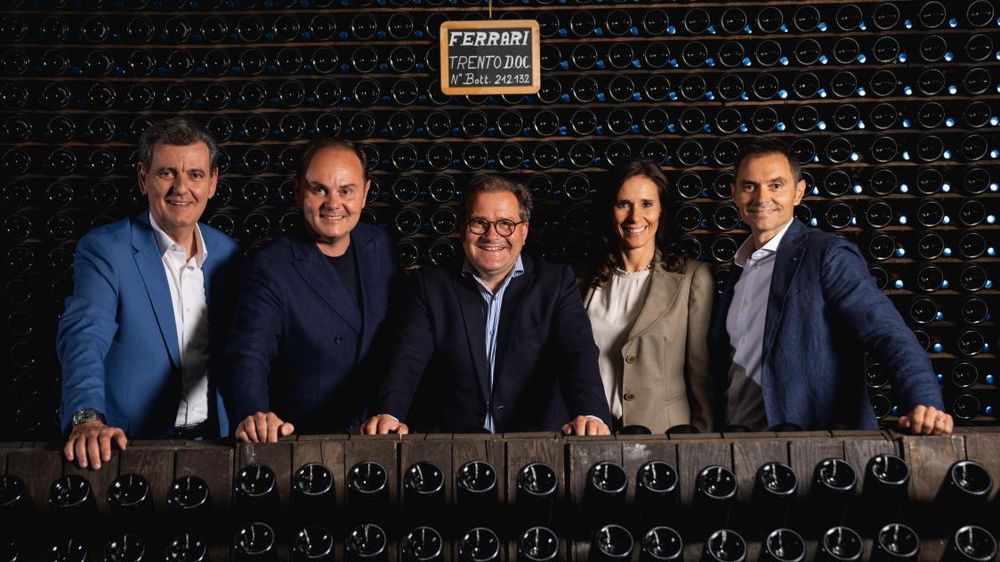
The new-look Ferrari Trento team. Cyril Brun centre, Camilla and Mateo Lunelli to his left and right
How Ferrari took its place on the podium
In June this year, Ferrari announced an extension to its hugely successful sponsorship of Formula 1 – it is now more often on the podium than its namesake red car. But this success is a relatively recent turn. Current chief executive Matteo Lunelli recalls the trouble he had selling the wines in 90s London.
“In the world of sparkling wine, Champagne has almost had a monopoly. Most people perceived Champagne as the only great sparkling wine (especially in the UK). This challenged us and drove us to improve our wines.”
“The world of sparkling has changed so much over the last 20 years. No one wanted to know about an alternative high-end sparkling wine in London when I started. It was the hardest market, but it began to change, starting with international recognition. We got 98 points with Robert Parker, then won the world sparkling wine championship five times.”
“Initially, when we paired up with Formula 1, some of the team were sceptical; they asked, ‘But what if someone asks for Champagne?’. We held many tastings, and now they understand and love the wines; we just extended our sponsorship. Formula 1 is growing; it offers an international opportunity to present our wine to 500 million viewers. It has been huge in the US and has helped us greatly.”
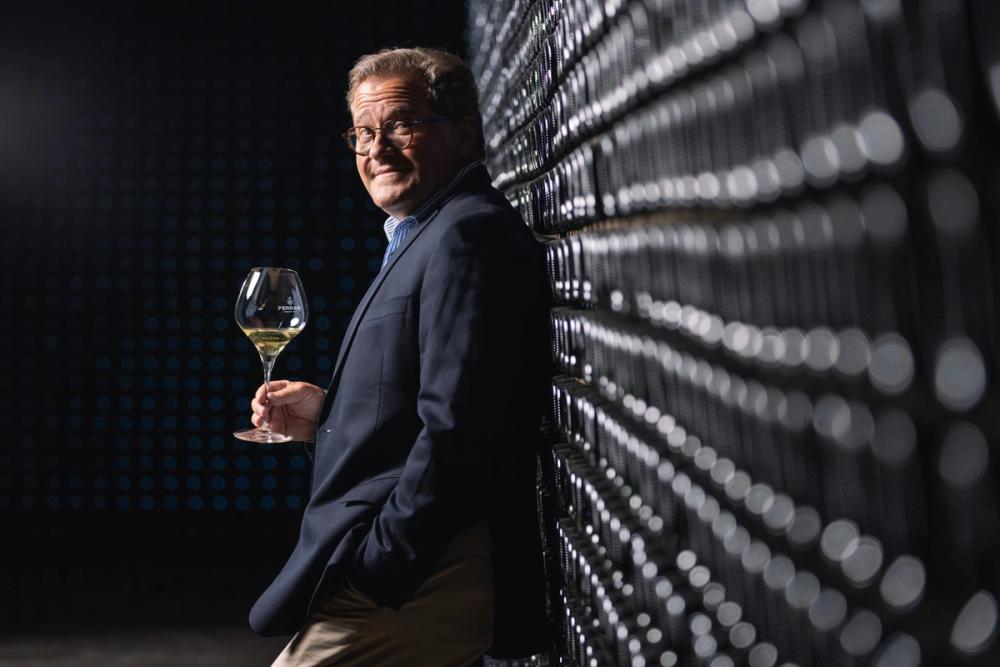
‘New company car’: Ferrari Trento’s new head of winemaking team Cyril Brun
Brun too sees the value of this kind of publicity: “I think you need to attract people and you need to woo people. It might look like an easy solution to pair with Formula 1 but first you need to attract attention then you can express who you really are and show your soul. If you don’t do that people will not naturally come to you because you are Ferrari in Trento, you are not Champagne.”
When Cyril Brun told his sons they were heading to Ferrari his youngest son’s face lit up and he asked his Dad excitedly what kind of company car he would be getting. It’s a mistake a lot of people make. (Brun currently drives an Aston Martin).
Gino Lunelli was mates with Enzo Ferrari of Ferrari Cars; I asked if there was ever an issue over sharing a brand name. Matteo was refreshingly candid and open in his response: “We never want to create confusion between us and Ferrari cars, and we have always had a good relationship with Ferrari.”
He adds: “We are two separate entities. You must understand that Ferrari is like Smith in the UK; there are loads of us, and it’s a typical Italian name.”
“We reached an agreement that says we can use the brand for beverages. We are so careful of the Ferrari Trentodoc name that even when we started our still wines, we called them something else. We don’t use it for our mineral water either. In Groupo Lunelli, we want to have authentic brands, authentically linked to the history, authentically linked to the territory.”
“Today, Ferrari makes perfume though Enzo Ferrari once said to my uncle, ‘The only perfume I care about is gasoline and motor oil’. Times have changed.”
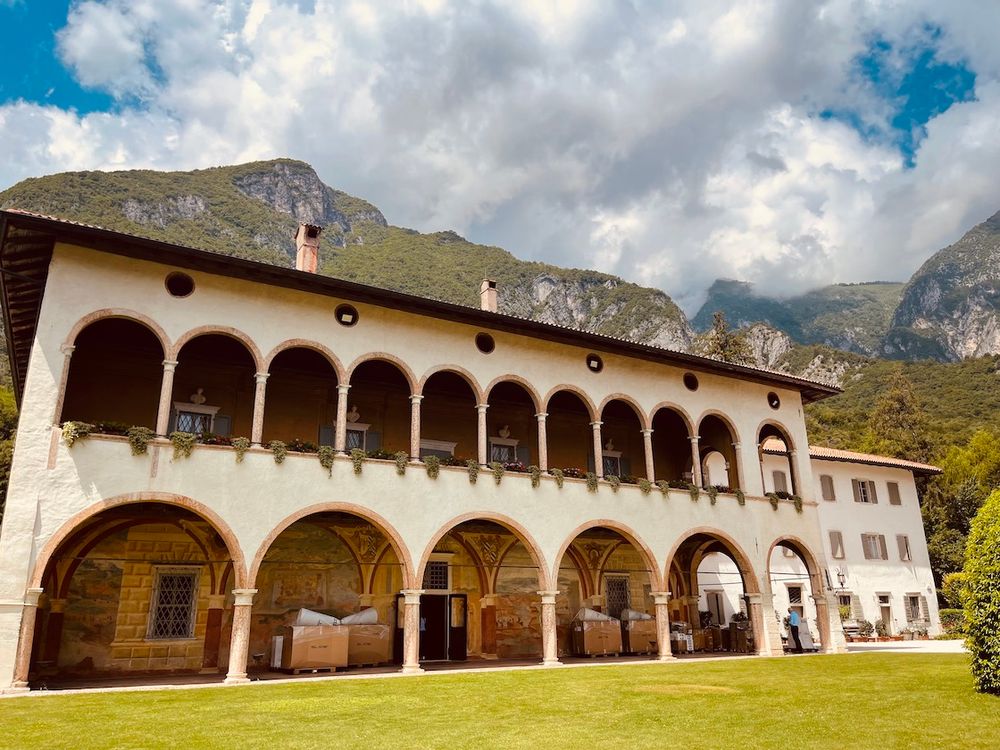
Villa Margon: a treasure of the region
Creating local synergy
The Lunelli Group understands the value of synergy and community. Everything at Ferrari sings harmoniously, from the 695 growers it has worked with sustainably on a handshake for two generations – to the other carefully selected benchmark brands in its portfolio. Aside from wine estates in Tuscany and Umbria, Tassoni and Bisol 1542, Lunelli Group owns a Michelin-starred restaurant called Locanda Margon. It even purchased Villa Margon, an exceptional example of sixteenth-century Venetian architecture that borders the Ferrari estate.
Camilla Lunelli loves the place so much that she chose it for her wedding. It is a truly magical spot, a pristine example of Venetian architecture with many perfectly preserved frescos.
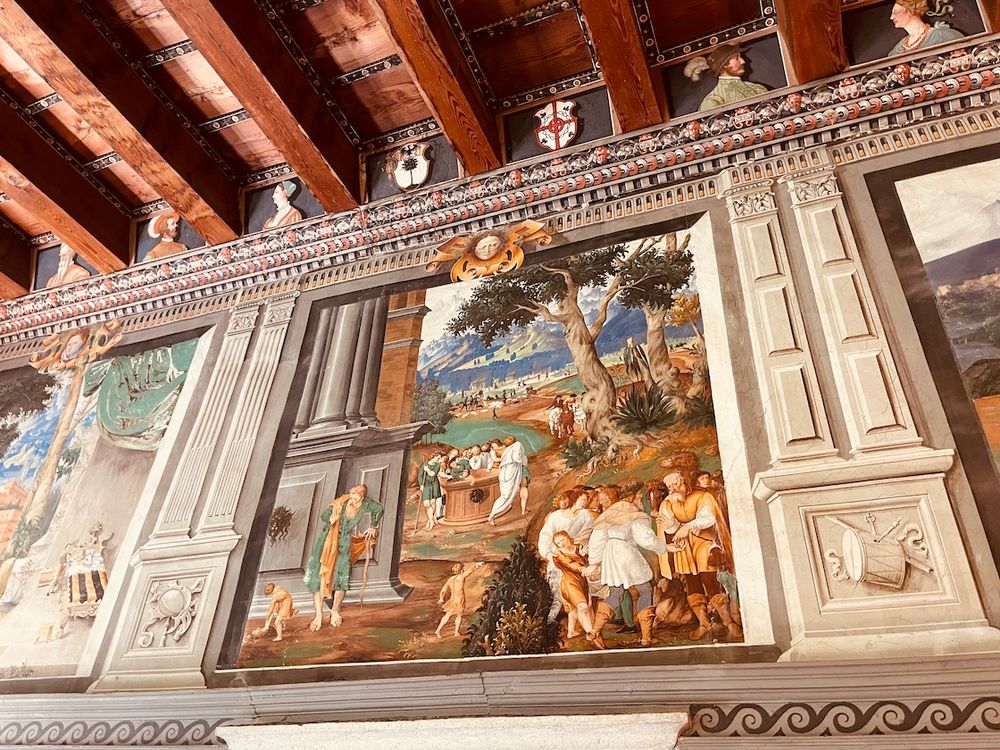
“Villa Margon is a treasure of the territory we open to the public; it’s a way for us to contribute to tourism. For me, sustainability is about protecting the environment and having a harmonic and positive relationship with our territory to create local synergy.”
Every year, Ferrari holds a party for its growers. Some such relationships date back two generations. Camilla explains: “They are a vital asset for us. We could not give the same attention as they can to their tiny parcels (they average about 1.4 hectares).”
The growers farm sustainably and follow a strict protocol after intensive training (Ferrari has eight enologists managing their growers). Ferrari became organic in 2017 and persuaded its growers to do the same. Though some are in conversion, by 2025, they will all be fully organic.
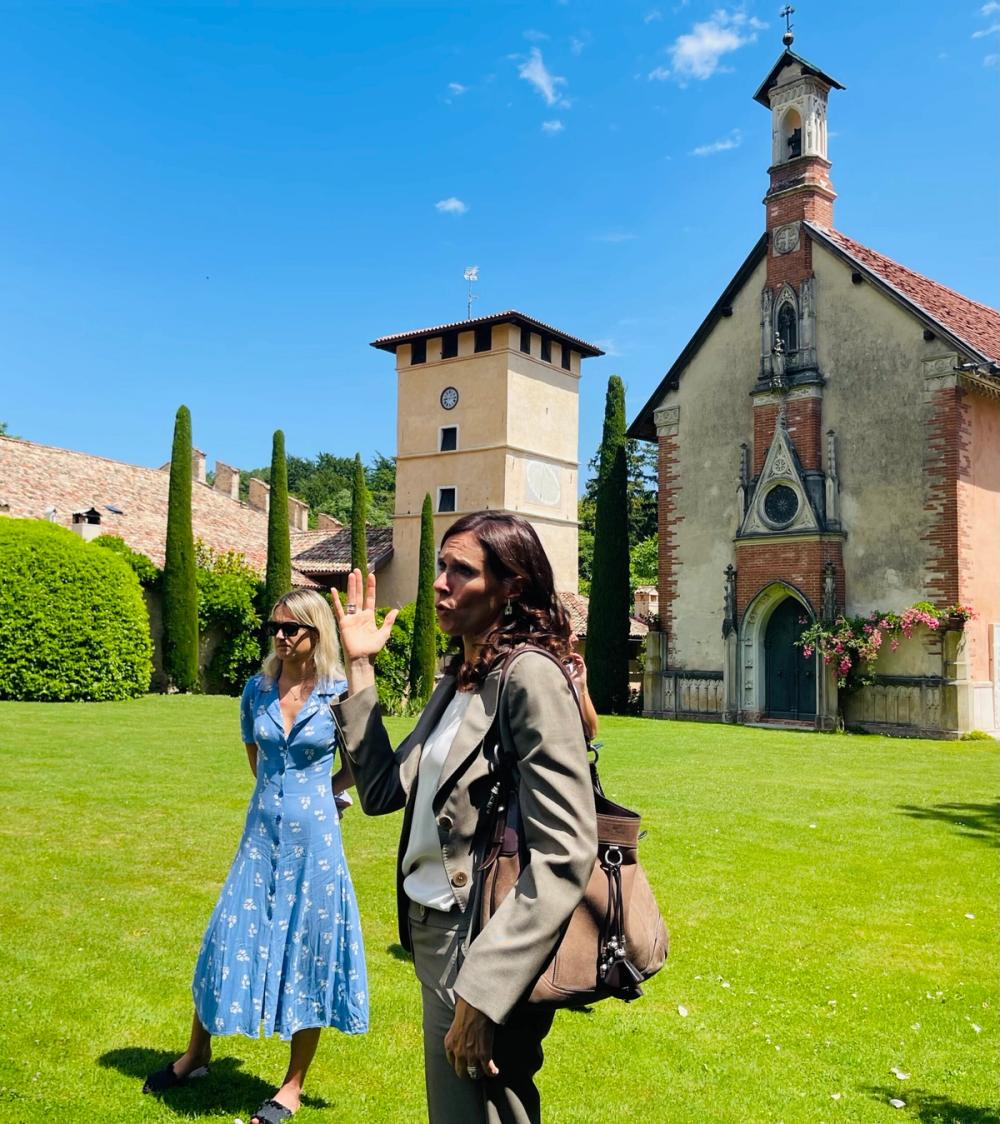
Camilla Lunelli guides the press team around the Ferrari estate
“We pay extra money because we are very demanding. My father told me that in the 70s and the 80s, it took a lot of work to get the producers to reduce their volumes. Pergola-trained vines can produce enormous yields. We pay them per hectare and keep yields low. In 2014, we applied this new strict sustainable protocol. The key to change for the growers was the emphasis on personal health. We explained that pesticides are far more damaging to their families’ health than others as they are in closer contact.”
“We were able to demonstrate the possibilities of organic viticulture in this climate. We started with small steps, experimenting with organic and biodynamic methods 20 years ago. We started to understand how a vineyard slowly reaches equilibrium. In 2017, we were certified. It’s a big investment and an even bigger commitment – it’s more labour-intensive and precise, and you must react quickly when needed.”
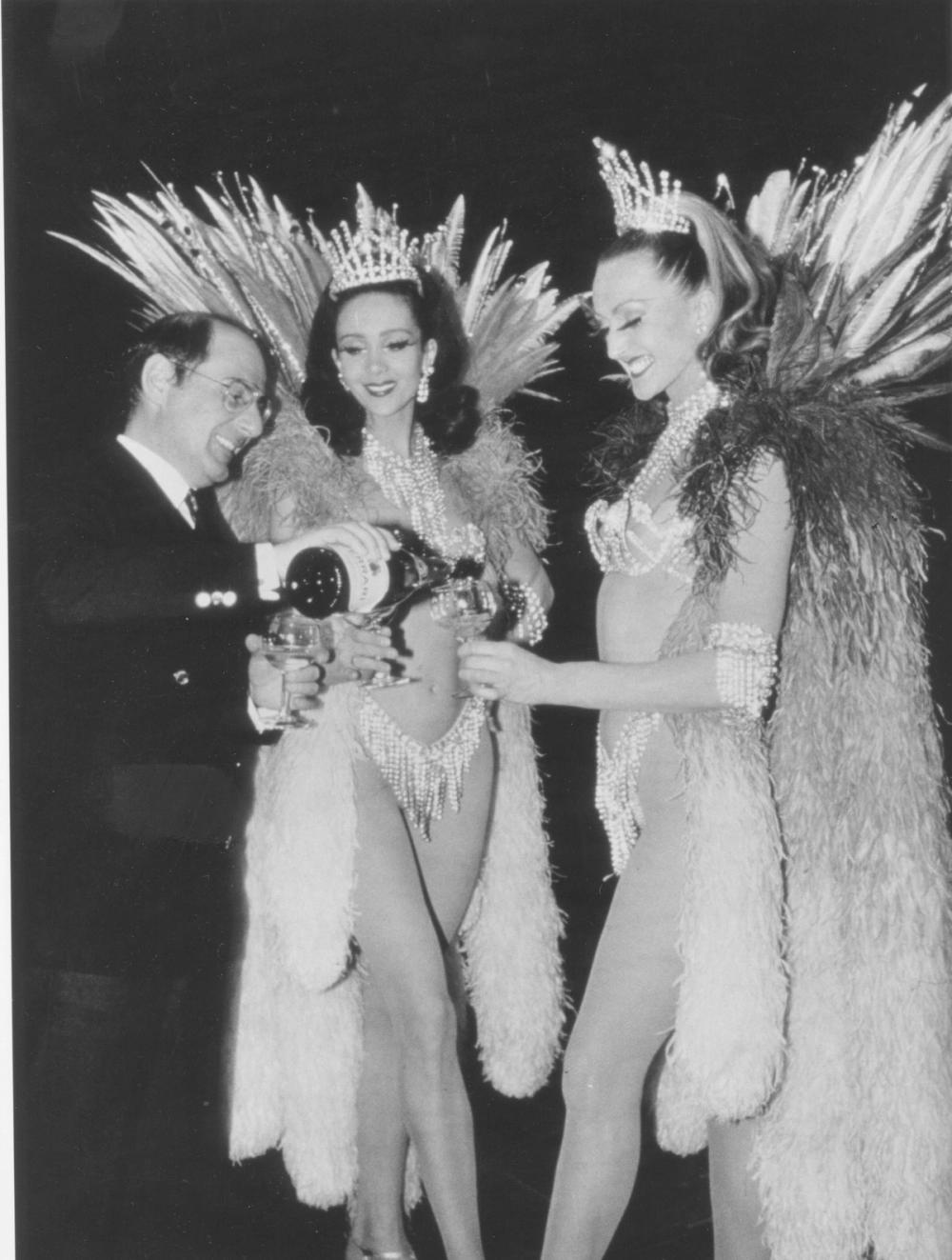
“There are worse things to be associated with than sex and success”: Matteo Lunelli
Building the Ferrari brand on-premise
That is the genius of Ferrari. It has a quintessentially Italian take on high-end luxury sparkling but combines it with a genuine sense of social responsibility. That well-worn cheesy 80s image of fast men mounting a podium to pop corks and spurt concupiscent foam over scantily clad models, is in the past. It was something that Camilla said she always struggled with. Though as Matteo said, “there are worse things to be associated with than sex and success”, Ferrari is about something so much more substantial than glamour today.
Matteo waxes further: “If you love bubbles, I am sure you will love Champagne, but there is a world of sparkling wine out there waiting to be discovered. Sparkling wine varies hugely, with some very poor Champagnes and some very inferior sparkling wines. The beauty of wine is it leads to discovery. It takes a very long time to develop a territory. Franciacorta has its style and its own strong identity. These are not copies of Champagne. Wine is beautifully diverse; there is a time for Bisol, and there is a time for Ferrari. The market is growing for sparkling. I think it’s the most contemporary wine. It matches with elegant lighter food; it’s a symbol of joy or conviviality. The market is growing, and there is huge demand.”
He adds: “In the UK, we are far more potent in restaurants than the off-trade. You build a brand on-premise, hand sold through restaurants; as the brand becomes better known, it makes sense in other markets. It’s a brand that needs to be explained; some people think it’s the car or an expensive Prosecco – that’s why we think restaurants, hotels and high-end bars are so important to us. Slowly, we are entering into retail markets; in the US, Formula One has increased awareness of the brand. We sell well in Florida and Texas.
“In Japan, we partner with JAL, who serve us instead of Champagne, the perfect partner with Japanese food. In the UK, we are in Harvey Nichols and Morrisons.”
So what were the Ferrari wines tasting like?

These are the wines I tasted. All were excellent; the most complex is undoubtedly Ferrari Maximum. Ferrari Perlé comes a close second; all of the Perlé wines are single vineyard from the Ferrari estate. Next comes Guilio Ferrari, which is again a single vineyard wine. I would say it has a lighter style than the Maximum and the Perlé.
A brief word about Pinot Noir which is in short supply in Trento. Being a delicate variety, it is hugely difficult to cultivate organically up in the mountains. Every bunch must be carefully trimmed by hand to aerate the grapes. The work required is intense and costly but the results speak for themselves.

Ferrari Maximum Blanc de Blancs NV, 12.5%. 100% Chardonnay, 30 months+ on lees. Concentrated yet fresh, pithy and balanced, it is bready – yeasty with almond, candied lemon, grapefruit and biscuit, citrus, yellow apple and apricot. The wine has a salty mineralic quality with a subtly sweet floral nose. The mousse is fine, frothy, delicately round, nutty, and immensely satisfying.
Ferrari Perlé Reserva 2005, Blanc de Blancs, 2005, 12.5% 100% Chardonnay. This was disgorged in 2010 and is therefore showing tertiary characters of toast, brandy, caramel, walnut skin and oily almond. There is creamy citrus and smoky mineral notes too, yellow apple, apricot, a hint of honeyed tropical fruit, almond, white pepper and yeasty bread. Succulent and complex. Rich, buttery, salty sup; divinely delicious.

Ferrari Perlé Nero Reserva 2013, 12.5%. 100% Pinot Noir. 6 years on lees, less than 3 grams of residual sugar. Delicate rose in hue. A hint of orange blossom and moreish yeasty bread, hazelnut, peanut butter and crème brûlée. Salty raspberry, redcurrant, cranberry, almonds, red apple, pear, peach and a hint of white pepper. Fine, creamy, succulent and long with a gorgeous savoury salty soy hued twist. Voluminous.
Guilio Ferrari Reserve del Fondatore 2010, 12.5%. 100% Chardonnay. Spends 10 years on lees, radical at the time and without precedent. Less than 3 grams of residual sugar. Superbly textural with a wonderfully moreish bitterness. Layered with a smörgåsbord of flavours, a hint of the floral – hawthorn, red apple, dried apricot, marzipan, beeswax, white pepper, candied lemon, buttery pastry, honey and white chocolate. Sumptuous, long and lusciously textural.

Ferrari Riserva Lunelli 2015 Brut, 12.5%. 100% Chardonnay. Matured in oak. Seven years on lees. Toasty yet restrained and linear. Yellow apple, candied lemon, a hint of pineapple and toasted hazelnuts.
Ferrari Perlé Rosé Reserva 2016, 12.5%. 100% Pinot Nero. Gorgeously fresh, sapid and layered with bitter orange and raspberry, salty caramel and nougat. Wild strawberry, raspberry, rose, and orange peel with a hint of high church incense.
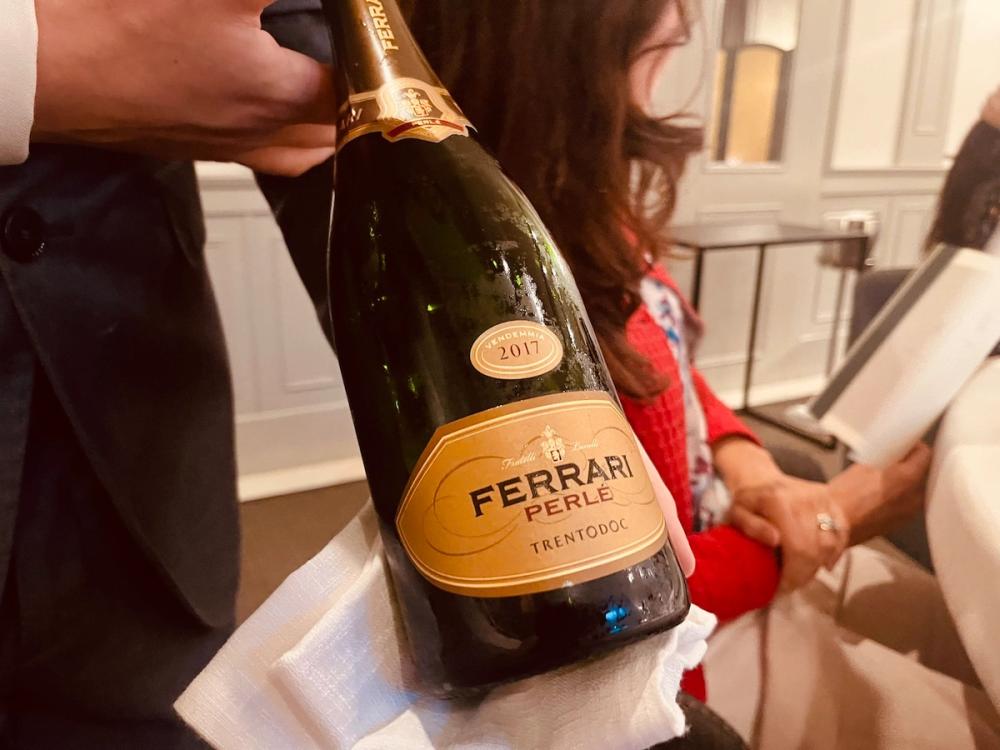
Ferrari Perlé, Blanc de Blancs, Trentodoc 2017, 12.5%. 100% Chardonnay. Over five years on the lees brings elegance and a deliciously decadent toasty brioche flavour. The wine is ripe and rich with granny smith apple, almond, pear, and citrus.
The wines of Ferrari are imported and sold in the UK by Bibendum, which is a commercial partner of The Buyer through C&C Group. To discover more about them, click here.
